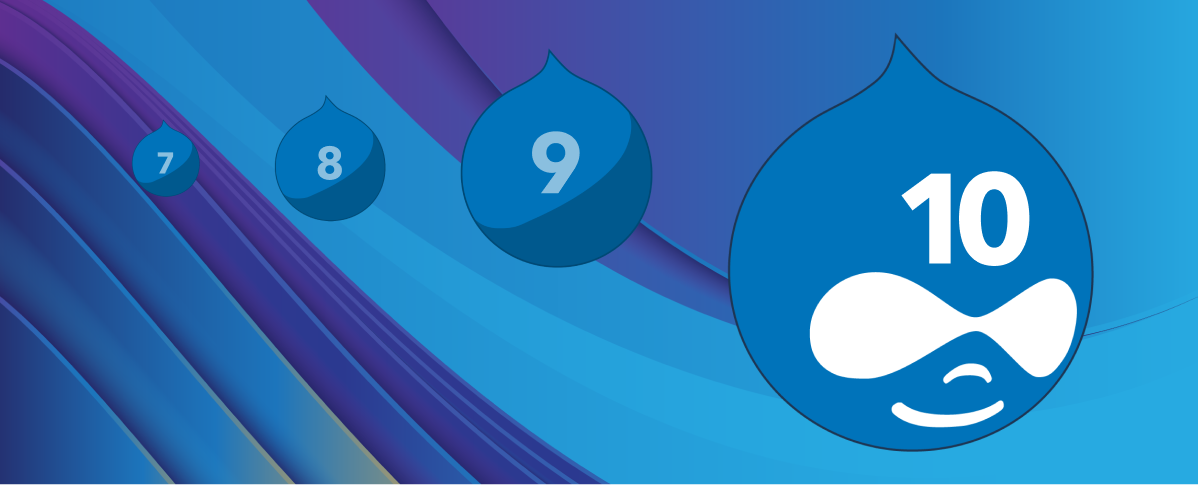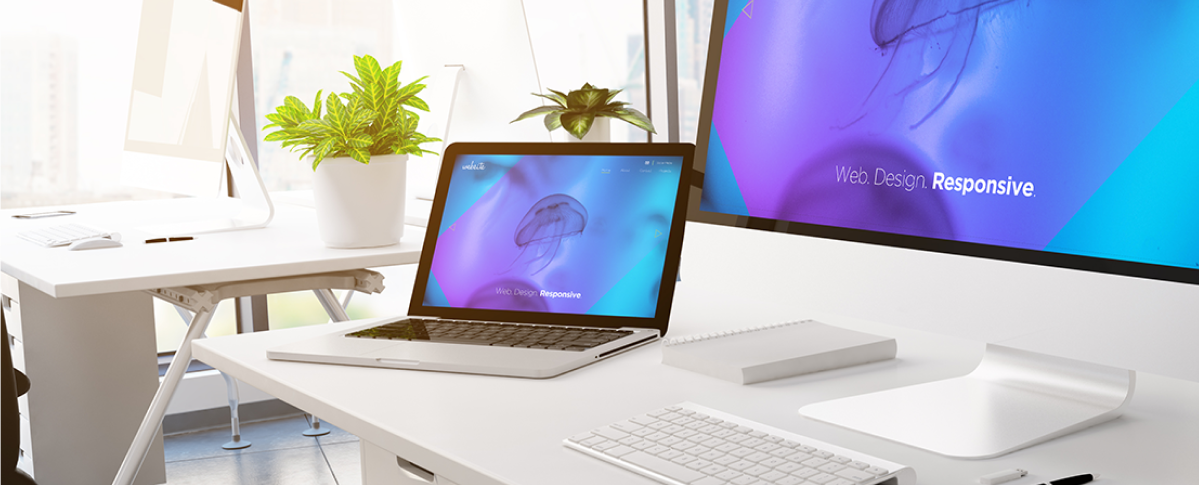In the ever-evolving landscape of the Drupal ecosystem, staying up to date with the latest technologies is crucial to maintaining a robust and secure online presence. For many organizations, this means migrating from Drupal 7 to newer versions like Drupal 10. While this transition promises enhanced features and improved performance, it’s not without its challenges. As you are already this far, we understand you are ready for the transition. Here are the top 5 pitfalls to watch out for when migrating from Drupal 7 to Drupal 10 and how to overcome them.
Tag: Drupal
Drupal 7: End-of-Life Migration Solutions [2023-2025]
Drupal 7 Migration Checklist
Are you prepared to take a significant step forward in shaping your digital presence? If your website currently operates on Drupal 7, you’re likely aware that it’s time to contemplate transitioning to a more robust and contemporary iteration of Drupal. The clock is ticking, with Drupal 7’s extended end-of-life deadline set for January 5, 2025, ushering in both promising opportunities and a series of challenges.
Within this blog post, we are here to serve as your trusted companion, guiding you through the essential Drupal 7 migration checklist. We comprehend that the notion of migrating a website can seem intimidating, but armed with the right approach and a meticulously crafted plan, the process can unfold with far greater ease than you might imagine. Whether you’re a business proprietor, a developer, or simply passionate about the digital landscape, this checklist will serve as a priceless resource, ensuring that your migration journey is a triumphant one.
Website Assessment and Pre-Migration Planning:
1. Conduct a Website Audit:
Begin by performing a comprehensive audit of your current Drupal 7 website. Identify all the components, including modules, themes, content types, and configurations. This audit will give you a clear picture of the complexity of the migration and help you prioritize critical tasks.
2. Identify Necessary Upgrades:
Check if the modules and themes used in your Drupal 7 website have compatible versions for Drupal 8, 9 or 10. If not, look for alternatives or consider custom development to replicate the functionality.
3. Assess Custom Code:
If you have custom code or contributed modules that are not available for Drupal 8, 9 or 10, evaluate the feasibility of updating or re-implementing the functionalities in the newer versions. Custom code may require more effort to adapt, so plan accordingly.
4. Estimate Migration Timeline and Resources:
Create a realistic timeline for the migration process, taking into account the complexity of your website and the availability of resources. Assign responsibilities to team members and communicate the plan to stakeholders.
5. Analyze User Behavior and Feedback:
Analyze user behavior on your current Drupal 7 website using tools like Google Analytics. Identify popular pages, frequently accessed content, and user feedback to inform your content strategy and ensure that essential elements are prioritized during migration.
6. Allocate Sufficient Resources:
Migrating to a new Drupal version requires time, effort, and resources. Allocate sufficient budget and team resources to avoid rushing the migration and ensure a thorough and successful transition.
7. Prepare a Data Migration Plan:
Create a detailed plan for data migration, including the transfer of users, user profiles, content, media files, and configurations. A well-thought-out data migration strategy reduces the risk of data loss and ensures a seamless transition.
8. Create a Rollback Plan:
Despite careful planning, unexpected issues can arise during migration. Prepare a rollback plan that outlines how to revert to the previous version in case of severe problems. This plan provides an added layer of security during the migration process.
9. Plan for Mobile Responsiveness:
Verify that your new Drupal version and theme are mobile-responsive. Mobile devices account for a significant portion of website traffic, so it’s crucial to deliver an optimal user experience on all devices.
10. Develop a Backup and Recovery Plan:
Design a comprehensive backup and recovery plan to safeguard your website’s data and configurations. Regularly back up your website data and ensure backups are accessible and secure. Before starting the migration, create a full backup of your Drupal 7 website, including files and the database. This ensures that you have a safety net in case any issues arise during the migration process.
11. Set Up Quality Assurance Processes:
Develop a quality assurance process to review the new Drupal version thoroughly before deploying it to the live website. Conduct multiple rounds of testing to catch any issues early on.
12. Create a Rollout Plan:
Plan the rollout of the new Drupal version in stages or phases, especially for larger websites or complex migrations. Gradual implementation can minimize disruptions and facilitate troubleshooting.
13. Create a Customization Strategy:
If your Drupal 7 website includes extensive customizations, strategize how to replicate or improve them on the new Drupal version. Customizations can enhance user experiences, so consider ways to incorporate them effectively.
14. Review Third-Party Integrations:
If your Drupal 7 website has integrations with third-party services or APIs, ensure that these integrations are compatible with your chosen Drupal version. Make necessary updates or find alternative solutions if needed.
15. Plan for Multilingual Content:
If your website supports multiple languages, plan the migration of multilingual content carefully. Ensure that translation modules and language settings are correctly configured in the new Drupal version.
16. Address Performance Bottlenecks:
Identify and address performance bottlenecks during the planning phase. Perform load testing to determine if your website can handle increased traffic and adjust server resources as needed.
17. Implement Content Freeze:
Establish a content freeze period during the migration to avoid changes to the live Drupal 7 website while the migration is in progress. This ensures that no new content is lost during the transition.
18. Plan for User Training and Onboarding:
Prepare training materials and conduct sessions for content editors, administrators, and other users who will work with the new Drupal version. Ensure they are familiar with the updated interface, features, and functionalities.
19. Evaluate Theme Compatibility:
If your current Drupal 7 website has a custom or contributed theme, assess its compatibility with the new Drupal version. Determine whether the theme can be upgraded, requires adjustments, or if it’s more practical to choose a new theme altogether.
20. Prepare for Downtime:
Depending on the size and complexity of your website, there might be some downtime during the migration process. Inform your users and stakeholders about the expected downtime and schedule the migration during low-traffic periods if possible.
21. Consider Multisite or Multilingual Migration:
If you manage multiple sites under a single Drupal installation or maintain multilingual websites, plan how to migrate and configure these sites in the new Drupal version. Implementing multisite or multilingual setups efficiently can save time and resources.
22. Address Database and Content Size:
For websites with substantial amounts of data, evaluate the database and content size to ensure that the new Drupal version can handle the volume efficiently.
Testing and Quality Assurance:
1. Test on a Staging Environment:
Set up a staging environment to test the migration process before applying changes to your live website. Conduct thorough testing to identify and fix any issues that may arise during the migration.
2. Test Cross-Browser Compatibility:
Test your new Drupal version across different browsers and devices to ensure consistent rendering and functionality. Cross-browser compatibility testing is crucial to deliver a seamless experience to users on various platforms.
3. Test Compatibility with Third-Party Services:
If your website relies on external services or APIs, such as payment gateways or marketing automation tools, ensure they are compatible with your new Drupal version. Test these integrations on your staging environment to ensure seamless functionality.
Communication
1. Update Documentation:
Document the entire migration process, including the steps taken, issues encountered, and solutions implemented. This documentation will be valuable for future reference and help streamline any future updates or migrations.
2. Communicate with Users:
Inform your website users and stakeholders about the upcoming migration and any potential downtime or changes in functionality. Keeping them informed will minimize surprises and ensure a positive user experience during and after the migration.
3. Review User Roles and Permissions:
Evaluate the user roles and permissions on your Drupal 7 website and plan how to replicate or improve them on the new version. This step is crucial, especially for websites with complex user access requirements.
4. Involve Stakeholders:
Engage stakeholders throughout the planning process, including content owners, department heads, and management. Their input and feedback are valuable for creating a migration plan that aligns with business goals.
Post Migration
1. Set Up Error Monitoring and Alerts:
Implement error monitoring and alert systems on the new Drupal version to detect and respond to any issues promptly. Proactive monitoring can help prevent potential disruptions.
2. Monitor Performance after Migration:
After migrating to the new Drupal version, closely monitor your website’s performance and user feedback. Address any post-migration issues promptly to ensure a smooth and stable experience for users.
3. Plan for Post-Migration Support:
Have a plan in place for post-migration support and maintenance. Be prepared to address any unforeseen issues and provide assistance to users and stakeholders as they adapt to the changes.
4. Monitor Performance after Migration:
After migrating to the new Drupal version, closely monitor your website’s performance and user feedback. Address any post-migration issues promptly to ensure a smooth and stable experience for users.
5. Monitor Server Performance:
Monitor server performance during the migration process to identify potential issues with server resources or configuration. Optimize server settings to ensure smooth operations after migration.
6. Plan for Post-Migration Testing:
Allocate time for post-migration testing to catch any issues that might not have surfaced during the initial testing phases. This phase ensures that the new Drupal version performs optimally in the live environment.
Website Performance and SEO
1. Prioritize Content Cleanup and SEO:
Take this opportunity to review and clean up your content. Remove outdated or irrelevant content, update and optimize images, and ensure that all content follows the latest SEO best practices including setting up proper 301 redirects for changed URLs update meta tags. This will not only streamline the migration process but also improve the overall user experience on your new Drupal version.
2. Implement Performance Optimization:
Use the migration process as an opportunity to optimize your website’s performance. Review and improve database queries, enable caching mechanisms, and utilize other performance optimization techniques to enhance website speed and responsiveness.
3. Optimize Media and Files:
Optimize media files, such as images and videos, to reduce their size and improve page loading speed. Use appropriate file formats and compression techniques while migrating media to the new version.
4. Review Content Types and Taxonomy:
Examine your existing content types and taxonomy structure in Drupal 7 and assess how they will be migrated to the new version. Ensure that the content types align with your content strategy and website goals for the future.
5. Prepare for Search Reindexing:
After migration, your website’s search functionality might require reindexing to ensure accurate and relevant search results. Plan for this process and communicate to users if there might be a temporary impact on search performance.
6. Set Up Analytics and Tracking:
Configure website analytics and tracking tools on the new Drupal version to monitor user behavior, track conversions, and measure the success of your website’s performance post-migration.
Legal & Compliance
1. Validate Legal and Compliance Requirements:
If your website has specific legal or compliance requirements, such as GDPR or accessibility regulations, ensure that the new Drupal version adheres to these standards.
2. Consider Accessibility Compliance:
Ensure that your new Drupal version adheres to accessibility guidelines, such as WCAG (Web Content Accessibility Guidelines). Make necessary adjustments to guarantee your website is accessible to all users, including those with disabilities.
Ask For Help
1. Engage with the Drupal Community:
Leverage the Drupal community for guidance and support during the migration. Participate in forums, attend meetups, and seek advice from experienced Drupal developers who have gone through similar migrations.
2. Consider Hiring Drupal Migration Experts:
If your migration involves complex customizations or you lack the necessary expertise in-house, consider hiring Drupal migration experts or agencies with a proven track record in successful migrations.
Conclusion
As we draw the curtain on our exploration of the essential Drupal 7 migration checklist, one key takeaway stands out: the extended end-of-life date for Drupal 7 has opened a doorway to a realm of innovation, function enhancement, and the fortification of our digital platforms. The steps laid out in this checklist aren’t just a roadmap for a technological update; they’re a powerful toolkit that empowers us with the knowledge and resources necessary to skillfully navigate this transition.
However, let’s not lose sight of the bigger picture. This journey is about more than mere technological shifts. It’s about shaping remarkable user experiences, streamlining content management, and ensuring our websites are ready to thrive in the ever-evolving digital landscape.
What we do today lays the groundwork for our digital presence in the days, months, and even years ahead. The preparation we invest now has the potential to make our platforms resilient, adaptable, and competitive in the dynamic digital arena.









































![Drupal 7: End-of-Life Migration Solutions [2023-2025]](https://pumex.com/wp-content/uploads/2023/08/Drupal-10-Migration-1.png)


